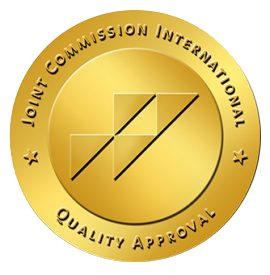Rationale and Design of the Efficacy of a Standardized Diuretic Protocol in Acute Heart Failure Study
Jeroen Dauw, Malgorzata Lelonek, Isabel Zegri-Reiriz, Cynthia P Paredes-Paucar, Cornelia Zara, Varghese George, Marta Cobo-Marcos, Dorit Knappe, Dmitry Shchekochikhin, Annop Lekhakul, Milka Klincheva, Simone Frea, Òscar Miró, Diane Barker, Attila Borbély, Samer Nasr, Nawal Doghmi, Rafael de la Espriella, Jagdeep S Singh, Virginia Bovolo, Inês Fialho, Noel T Ross, Mieke van den Heuvel, Riad Benkouar, Hajo Findeisen, Imad A Alhaddad, Kais Al Balbissi, Gonzalo Barge-Caballero, Azmee M Ghazi, Liesbeth Bruckers, Pieter Martens, Wilfried Mullens
Although acute heart failure (AHF) with volume overload is treated with loop diuretics, their dosing and type of administration are mainly based upon expert opinion. A recent position paper from the Heart Failure Association (HFA) proposed a step-wise pharmacologic diuretic strategy to increase the diuretic response and to achieve rapid decongestion. However, no study has evaluated this protocol prospectively.
The Efficacy of a Standardized Diuretic Protocol in Acute Heart Failure (ENACT-HF) study is an international, multicentre, non-randomized, open-label, pragmatic study in AHF patients on chronic loop diuretic therapy, admitted to the hospital for intravenous loop diuretic therapy, aiming to enrol 500 patients. Inclusion criteria are as follows: at least one sign of volume overload (oedema, ascites, or pleural effusion), use ≥ 40 mg of furosemide or equivalent for >1 month, and a BNP > 250 ng/L or an N-terminal pro-B-type natriuretic peptide > 1000 pg/L. The study is designed in two sequential phases. During Phase 1, all centres will treat consecutive patients according to the local standard of care. In the Phase 2 of the study, all centres will implement a standardized diuretic protocol in the next cohort of consecutive patients. The protocol is based upon the recently published HFA algorithm on diuretic use and starts with intravenous administration of two times the oral home dose. It includes early assessment of diuretic response with a spot urinary sodium measurement after 2 h and urine output after 6 h. Diuretics will be tailored further based upon these measurements. The study is powered for its primary endpoint of natriuresis after 1 day and will be able to detect a 15% difference with 80% power. Secondary endpoints are natriuresis and diuresis after 2 days, change in congestion score, change in weight, in-hospital mortality, and length of hospitalization.
The ENACT-HF study will investigate whether a step-wise diuretic approach, based upon early assessment of urinary sodium and urine output as proposed by the HFA, is feasible and able to improve decongestion in AHF with volume overload.
Read More
Leave a reply Abstract
Aims
Although acute heart failure (AHF) with volume overload is treated with loop diuretics, their dosing and type of administration are mainly based upon expert opinion. A recent position paper from the Heart Failure Association (HFA) proposed a step-wise pharmacologic diuretic strategy to increase the diuretic response and to achieve rapid decongestion. However, no study has evaluated this protocol prospectively.
Methods and results
The Efficacy of a Standardized Diuretic Protocol in Acute Heart Failure (ENACT-HF) study is an international, multicentre, non-randomized, open-label, pragmatic study in AHF patients on chronic loop diuretic therapy, admitted to the hospital for intravenous loop diuretic therapy, aiming to enrol 500 patients. Inclusion criteria are as follows: at least one sign of volume overload (oedema, ascites, or pleural effusion), use ≥ 40 mg of furosemide or equivalent for >1 month, and a BNP > 250 ng/L or an N-terminal pro-B-type natriuretic peptide > 1000 pg/L. The study is designed in two sequential phases. During Phase 1, all centres will treat consecutive patients according to the local standard of care. In the Phase 2 of the study, all centres will implement a standardized diuretic protocol in the next cohort of consecutive patients. The protocol is based upon the recently published HFA algorithm on diuretic use and starts with intravenous administration of two times the oral home dose. It includes early assessment of diuretic response with a spot urinary sodium measurement after 2 h and urine output after 6 h. Diuretics will be tailored further based upon these measurements. The study is powered for its primary endpoint of natriuresis after 1 day and will be able to detect a 15% difference with 80% power. Secondary endpoints are natriuresis and diuresis after 2 days, change in congestion score, change in weight, in-hospital mortality, and length of hospitalization.
Conclusions
The ENACT-HF study will investigate whether a step-wise diuretic approach, based upon early assessment of urinary sodium and urine output as proposed by the HFA, is feasible and able to improve decongestion in AHF with volume overload.
Read More







